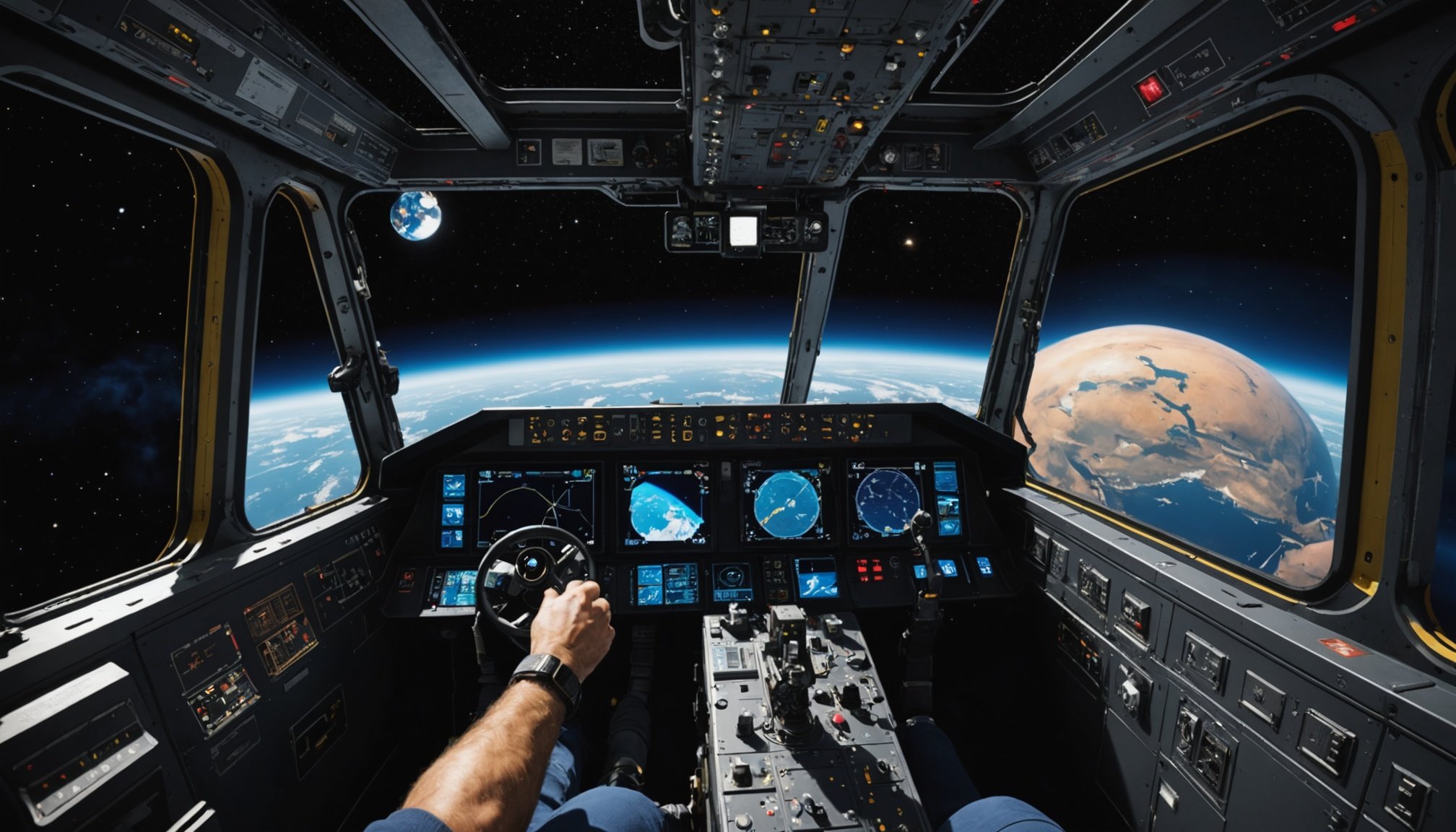Understanding Real-World Physics in Space Simulations
In the realm of space simulation, realistic portrayal of physics principles is crucial to delivering an authentic experience. Key principles such as gravity, inertia, and velocity are not only foundational to space exploration but also dictate many design decisions within games. These elements influence how a player maneuvers a spacecraft, resulting in a more engaging and educational experience.
Gravity plays a vital role, as it affects the trajectory and speed of spaceships, simulating real-world celestial motion. It ensures that players must carefully plan trajectories to conserve fuel and avoid orbital mishaps. Similarly, inertia must be considered; once a spacecraft moves in space, it remains in constant motion unless acted upon by an external force. This principle provides players with a realistic challenge, as they learn to control timing and thrust.
Topic to read : Mastering Character Fairness in Fighting Games: Proven Strategies for Balanced Gameplay
Moreover, velocity alters the dynamics of gameplay, dictating how quickly objects move relative to one another. These combined principles transform the player’s journey from a simple task into an intricate dance of motion and counteraction. Integrating accurate physics not only makes simulations realistic but also enriches the player’s understanding of the cosmos, turning gameplay into an interactive physics lesson.
Challenges Faced by Developers
Developing realistic physics in space simulation games is a formidable task. Game developers encounter numerous technical limitations when attempting to replicate real-world physics accurately. These include computational constraints, which make it difficult to render complex physical interactions in real-time without compromising performance. Achieving a balance between realism and engaging gameplay mechanics is another challenge. Developers must ensure that while games remain scientifically accurate, they are also enjoyable and accessible to a wide audience.
Also read : Mastering Console Gaming: Proven Techniques to Reduce Input Lag and Boost Your Competitive Advantage
For instance, incorporating sophisticated physics principles may make a game feel cumbersome or overly complex for players unfamiliar with such concepts. Therefore, developers often opt for simplified models that capture the essence of reality without overwhelming players. This is especially crucial in keeping the player experience smooth and intuitive.
Case studies provide insight into how some games have managed these challenges, such as “Kerbal Space Program,” which initially struggled with accurate physics representation. The game began with simplified models but evolved through community feedback into a more authentic simulation. Balancing physics with player engagement has been a core aspect of its game’s development journey. These examples highlight the dynamic between maintaining realism and ensuring games remain fun and captivating.
Case Studies of Notable Space Simulation Games
In the evolution of space games, the execution of realistic physics engineering has been pivotal. These games not only challenge developers but also engage players through immersive simulations.
Game Title 1
A prime example of thoughtful integration of realistic physics is “Kerbal Space Program.” Renowned for its accurate portrayal of orbital mechanics, the game requires players to apply genuine space exploration strategies. The developers focused on getting physics principles like gravity and inertia just right, resulting in a meticulous yet rewarding player experience. Feedback highlights the thrill and intricacy of planning efficient trajectories and fuel management, elements made possible by precise physics modeling.
Game Title 2
Another notable game, “Space Engineers,” faces unique physics challenges. Its real-time construction and destruction mechanics provide players with a dynamic environment where real-world physics concepts are pivotal. Developers encountered hurdles in translating realistic material behaviour and structural integrity within a constantly evolving gameplay. Despite these, players appreciate the heightened sense of immersion, often praising the game’s balance between realism and creativity in engineering tasks.
Game Title 3
In “Elite Dangerous,” innovative approaches take center stage, with a strong emphasis on seamless and realistic space flight physics. Compared to others in the genre, this game offers a more authentic vastness of space, crafting a sense of endless exploration. Insights reveal the development team’s commitment to crafting an engaging and believable cosmic milieu.
Developer Insights and Interviews
Exploring game development insights provides valuable understanding of the intricacies involved in creating realistic space simulations. Through developer interviews, we gain a glimpse into their strategies, revealing the meticulous effort required to balance realism and entertainment. Developers often emphasize the importance of integrating physics principles in a manner that enhances, rather than detracts from, the gaming experience.
One common challenge encountered by developers is the need to overcome realism challenges without negatively affecting gameplay. It is not uncommon for teams to spend considerable time perfecting the portrayal of gravity, inertia, and velocity to ensure an authentic experience. Many developers highlight the importance of community feedback in refining these elements, illustrating how player insights can guide improvements.
Looking toward the future, developers express enthusiasm for upcoming trends and technologies poised to revolutionize physics in gaming. Advances in computational power and simulation techniques hold the promise of even more accurate and seamless physics portrayal, potentially leading to entirely new gameplay experiences. These predicted innovations could elevate space simulations to new heights, offering players an unprecedented level of immersion and interactivity.
Impact of Physics Barriers on Player Experience
Physics principles are essential in shaping the player’s journey in space simulation games. By implementing accurate physics, developers can create an immersive universe that mirrors real-world space exploration. This fosters an authentic gameplay environment that heightens player engagement. However, the intricacy of these physics systems can also present game mechanics challenges that impact the overall experience.
Consider the role of physics in gameplay: when a game’s physics are precise, players are compelled to adapt strategies that reflect real-world scenarios. This not only enhances immersion but also demands a deeper cognitive involvement from players. For instance, understanding how inertia affects spacecraft motion leads players to carefully plan their maneuvers, fostering a sense of accomplishment upon success.
However, when physics barriers become too complex, they can create frustration and disrupt the player experience. Striking the balance between realism and accessibility is crucial. Games with overly simplified physics might feel less immersive, while those with intricate systems can be overwhelming.
In this delicate dance between realism and player satisfaction, the key is gradual complexity that allows players to learn and adapt at a comfortable pace, ultimately making the game rewarding and engaging.






